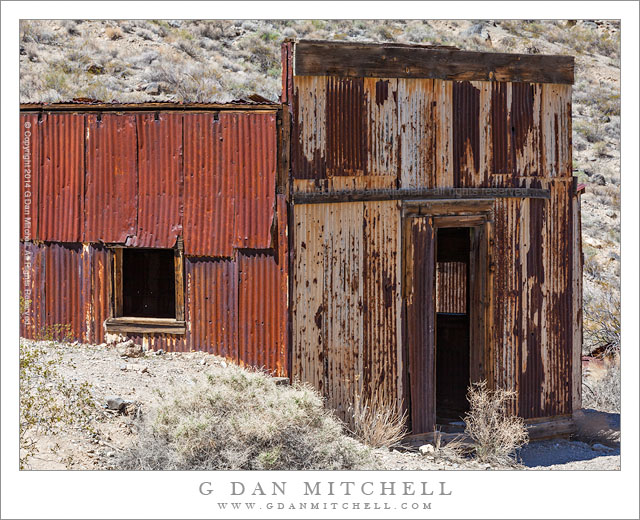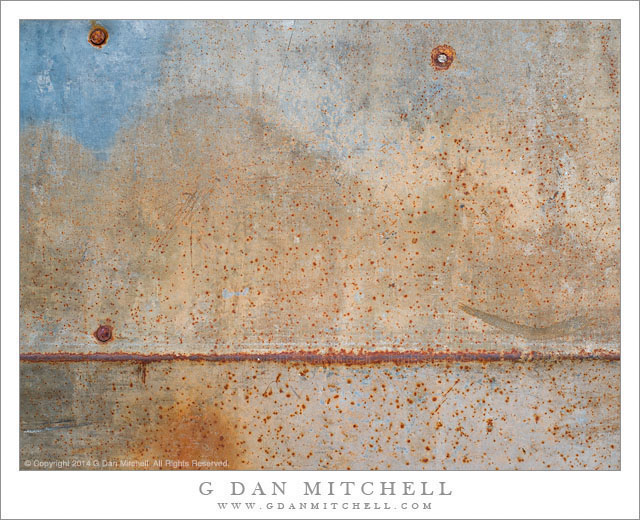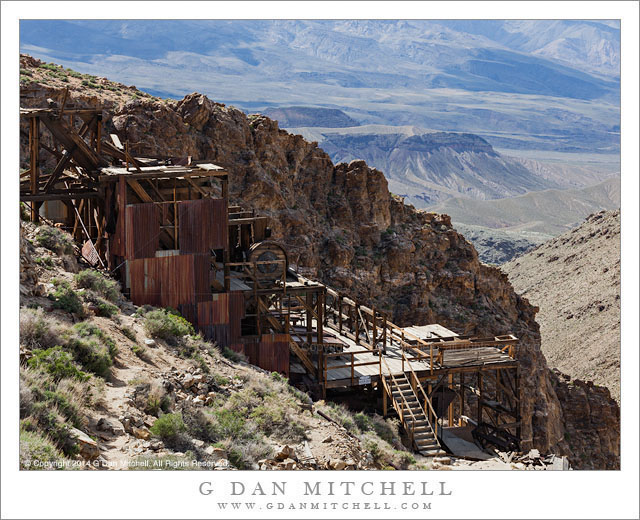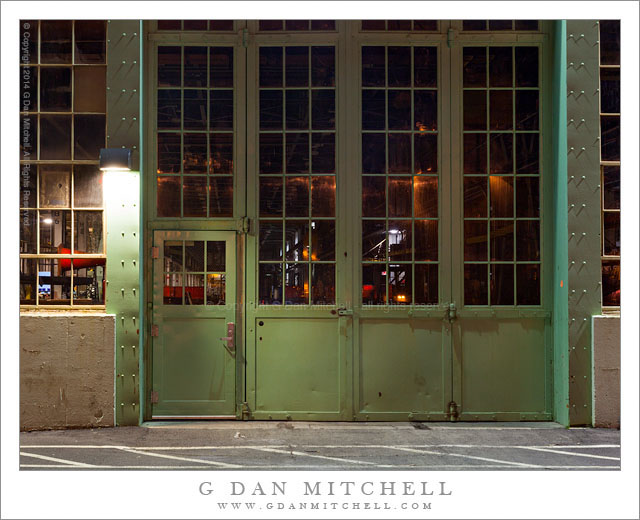
Rusting Building, Leadfield. Death Valley National Park, California. April 1, 2014. © Copyright 2014 G Dan Mitchell – all rights reserved.
A rusting corrugated building, one of the few remaining structures at the ghost town of Leadfield, California
This is one of the few standing structures remaining from the boom town of Leadfield, in the backcountry of Death Valley National Park, in the Grapevine Mountains more or less midway between the Beatty, Nevada area and the main Death Valley. The standard story is that this town was the result of one of the biggest swindles and scams in the mining history of the area, and the story is often told of the main promoter salting the mine with ore brought in from other locations and producing brochures featuring boats on the Amargosa River… which is typically completely dry. In the process of preparing this photograph to share I did a bit of reading, and it seems like the story might not be quite so simple nor so dramatic. Apparently there was a history of prospecting and mining in this area before the town was created in the mid-1920s, and lead and perhaps silver were actually mined from the place. A range of problems led to its downfall—the distance the ore needed to be transported, problems with the sale of shares in the mines—but it may not be true that the mine itself was essentially just a scam.
This building is well-known to those who have visited the place, as it is one of two buildings that still stand. Both are located near the entrance to one of the mine shafts, and it seems likely that this was not a residence but rather some building related to mine operations. Today it is a mere shell, but I find it amazing that it still stands nearly 90 years after the “town” (which apparently consisted largely of tents) was abandoned. Even more amazing is to stand at this spot and look out at the surrounding landscape—a rugged and uncompromising mountainous desert terrain—and imagine what it must have been like to live and work in such a place.
 G Dan Mitchell is a California photographer and visual opportunist whose subjects include the Pacific coast, redwood forests, central California oak/grasslands, the Sierra Nevada, California deserts, urban landscapes, night photography, and more.
G Dan Mitchell is a California photographer and visual opportunist whose subjects include the Pacific coast, redwood forests, central California oak/grasslands, the Sierra Nevada, California deserts, urban landscapes, night photography, and more.
Blog | About | Flickr | Twitter | Facebook | Google+ | 500px.com | LinkedIn | Email
Text, photographs, and other media are © Copyright G Dan Mitchell (or others when indicated) and are not in the public domain and may not be used on websites, blogs, or in other media without advance permission from G Dan Mitchell.



